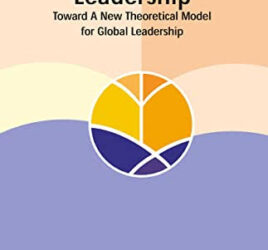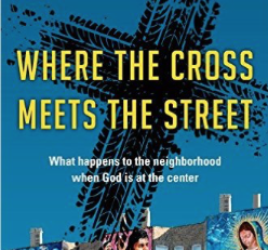
Memories, Hopes, and Conversations
As a professor at Fuller Theological Seminary, author Mark Lau Branson was quickly recruited as a consultant soon after he started attending First Presbyterian Church in Altadena, California. The founding pastor had recently left the church in a wake of discouragement and disagreements. Branson recommended they implement the organizational change method of Appreciative Inquiry (AI) to rediscover the vision and values of the church. Though originating and utilized in corporate settings, Branson adapted the process to the congregational environment and helped steer the church into a season of renewal. How they did this is described with detail in Branson’s book Memories, Hopes and Conversations: appreciative inquiry and congregational change.[1]
Interestingly, Branson ascribes his first contact with AI when he met with Corrie DeBoer from Manila at a gathering of the Pacific Rim think tank, which was organized by Ray Bakke of International Urban Associates (and later the founder of Bakke Graduate University). DeBoer had applied AI with denominational seminaries in the Philippines and generated success in creating a unified strategy. Having done further research, Branson then applied it at the predominant Japanese immigrant church amidst their difficult transition. The book starts off with introducing the context of the church and the concepts of AI. In the third chapter, Branson highlights the theme of thanksgiving, which is predominant throughout Scripture, as a biblical foundation. In chapters four and five the process as it was implemented is described with samples and stories. The final chapter provides schedules and scripts as examples if the reader were to implement this in their own church or organization. In addition, Branson has provided many resources in the appendices to be modified for use.
Before reading this book, I was considering utilizing AI in our congregation during our upcoming visioning process. Now I am really encouraged and excited to go ahead with it. The AI process provides a broad base of participation from all groups within the congregation and is implemented through simple one-on-one interview questions. From this data, themes are discovered which then result into provocative statements which describe a future scenario in present tense. The key to AI is its positive approach to envisioning the future based on real and factual experiences. The best from the past is projected into the future, which leads people to gravitate their conversations and actions towards it. Because of the broad ownership, people will start implementing change without top-down or centralized organization. The whole process provides a buzz from beginning to end, an excitement that lifts the entire organization up and forward.
Having read Branson’s story and gained so many practical resources, I feel equipped and ready to initiate the AI process in my church (Hanoi International Fellowship, HIF). I am planning to introduce more about AI at our next leadership retreat and have the elders do the example interview with each other during the meeting. We will have to adjust the questions and the process to our research topic and context, but it should not be hard to implement. It will be time consuming, yet worth all our while to come to a broadly shared renewed vision for HIF.
By Jacob Bloemberg
[1] Mark Lau Branson, Memories, Hopes, and Conversations: Appreciative Inquiry and Congregational Change (Herndon, VA: Alban, 2004).




